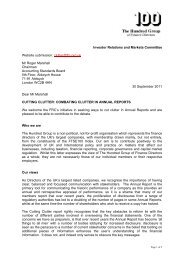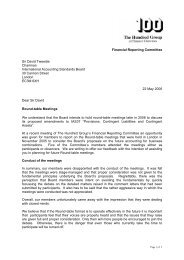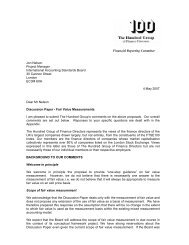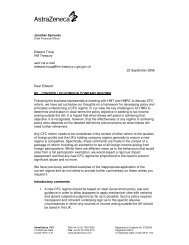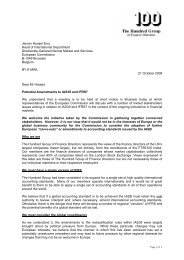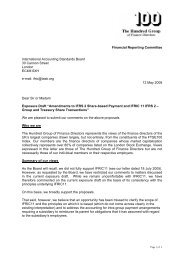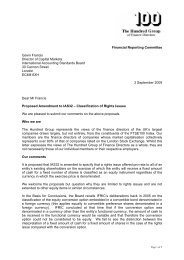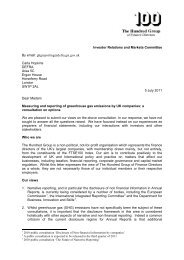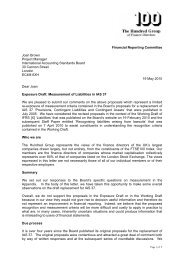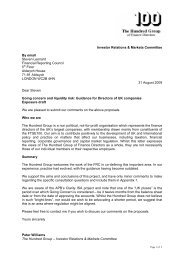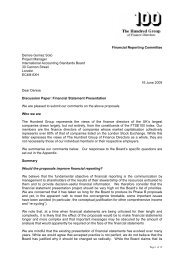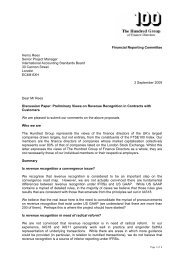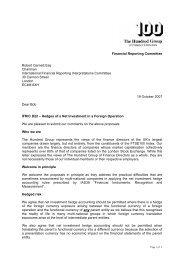Financial Reporting Committee Rachel Knubley Senior Project ...
Financial Reporting Committee Rachel Knubley Senior Project ...
Financial Reporting Committee Rachel Knubley Senior Project ...
Create successful ePaper yourself
Turn your PDF publications into a flip-book with our unique Google optimized e-Paper software.
(b) A single obligation to pay rentals that includes obligations arising under<br />
contingent rental arrangements and residual value guarantees.<br />
Do you support the proposed approach? If not, why?<br />
We support the boards’ approach.<br />
Components of complex leases are interrelated and usually act together to provide the lessor<br />
with an acceptable overall return. We therefore believe that to account separately for those<br />
components would not faithfully represent the commercial substance of the lease.<br />
Under the boards’ proposed approach the effect of embedded derivatives in relation to<br />
contingent rentals and residual values will be taken into account in estimating the obligation<br />
to pay lease rentals. We therefore believe that it serves no purpose to separately account for<br />
those embedded derivatives that are not considered to be ‘closely related’ to the host lease<br />
contract. We therefore believe that derivatives embedded within lease contracts should be<br />
excluded from the scope of IAS39.<br />
CHAPTER 4: INITIAL MEASUREMENT<br />
Question 6<br />
Do you agree with the boards’ tentative decision to measure the lessee’s obligation to<br />
pay rentals at the present value of the lease payments discounted using the lessee’s<br />
incremental borrowing rate?<br />
If you disagree, please explain why and describe how you would initially measure the<br />
lessee’s obligation to pay rentals.<br />
We would prefer that the lessee’s incremental borrowing rate is used only if it is not<br />
practicable to estimate the rate implicit in the lease (as is the case under the existing<br />
standards).<br />
We believe that the estimate of the rate implicit in the lease provide the best estimate of the<br />
finance costs associated with the lease. Use of the rate implicit in the lease will therefore<br />
also give the best estimate of the right of use asset associated with the lease.<br />
Paragraph 4.10 implies that an entity’s incremental borrowing rate will always be available.<br />
In reality, it may not always be possible in practice for an entity to borrow over a period<br />
equivalent to the lease term and such borrowing may be at punitive rates (this has been<br />
demonstrated in sharp relief during the recent financial crisis).<br />
We would welcome guidance from the boards as to the appropriate incremental borrowing<br />
rate to use in the context of a group’s financial statements, i.e. is it that of the subsidiary that<br />
leases the asset or the group as a whole? Use of different incremental borrowing rates is<br />
likely to add complexity in the context of a group whose subsidiaries prepare financial<br />
statements in accordance with IFRSs.<br />
Page 6 of 12



